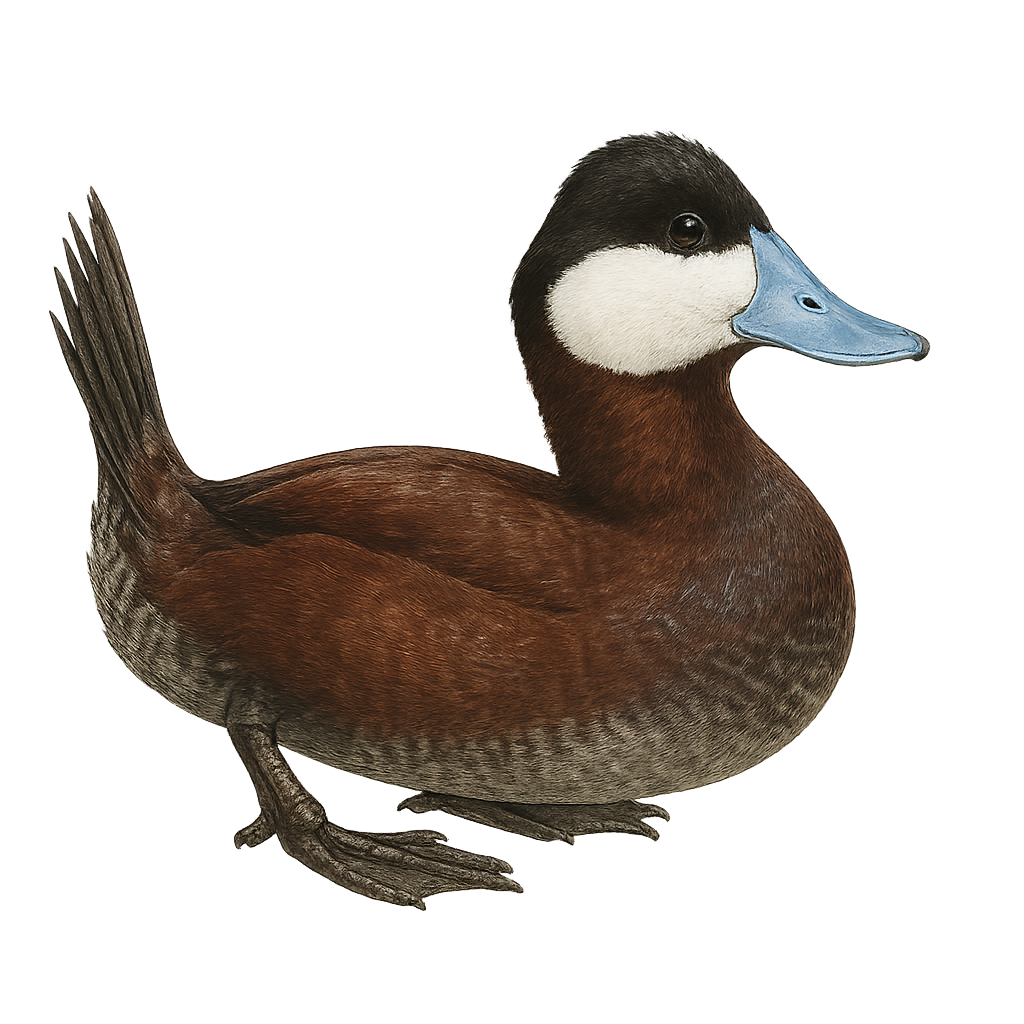Your wildlife photography guide.
Explore the ruddy duck in detail, study its behavior, prepare your shots.
Where to observe and photograph the ruddy duck in the wild
Learn where and when to spot the ruddy duck in the wild, how to identify the species based on distinctive features, and what natural environments it inhabits. The WildlifePhotographer app offers tailored photography tips that reflect the ruddy duck’s behavior, helping you capture better wildlife images. Explore the full species profile for key information including description, habitat, active periods, and approach techniques.
Ruddy Duck
Scientific name: Oxyura jamaicensis

IUCN Status: Least Concern
Family: ANATIDAE
Group: Birds
Sensitivity to human approach: Not very shy
Minimum approach distance: 5 m
Courtship display: May to July
Incubation: 23-26 jours
Hatchings: May to August
Habitat:
Lakes, ponds, marshes
Activity period :
Primarily active during the day, with peak activity in the morning and late afternoon.
Identification and description:
The Ruddy Duck is a small diving duck with distinctive plumage. The male has a black head with a bright blue bill, a reddish-brown body, and often holds its tail upright. The female is more subdued, with brown plumage and subtler facial patterns. These ducks are commonly found in North American wetlands but have also been introduced to Europe. They prefer calm waters rich in vegetation, feeding mainly on aquatic plants, insects, and small crustaceans. Their behavior is generally not very shy, making them accessible for observation. They are known for their spectacular courtship displays, where the male shows off his blue bill and upright tail to attract the female.
Recommended lens:
400mm – adjust based on distance, desired framing (portrait or habitat), and approach conditions.
Photography tips:
To photograph the Ruddy Duck, aim for early morning or late afternoon when the light is soft. Use a telephoto lens of at least 400mm to capture precise details without disturbing the bird. Keep a distance of at least 5 m to avoid scaring it. Be patient and wait for the bird to relax to get natural shots. Reflections on the water can add an artistic dimension to your photos, so try to include the aquatic environment in your compositions.
The WildlifePhotographer App is coming soon!
Be the first to explore the best nature spots, track rutting seasons, log your observations, and observe more wildlife.
Already 1 439 wildlife lovers subscribed worldwide

